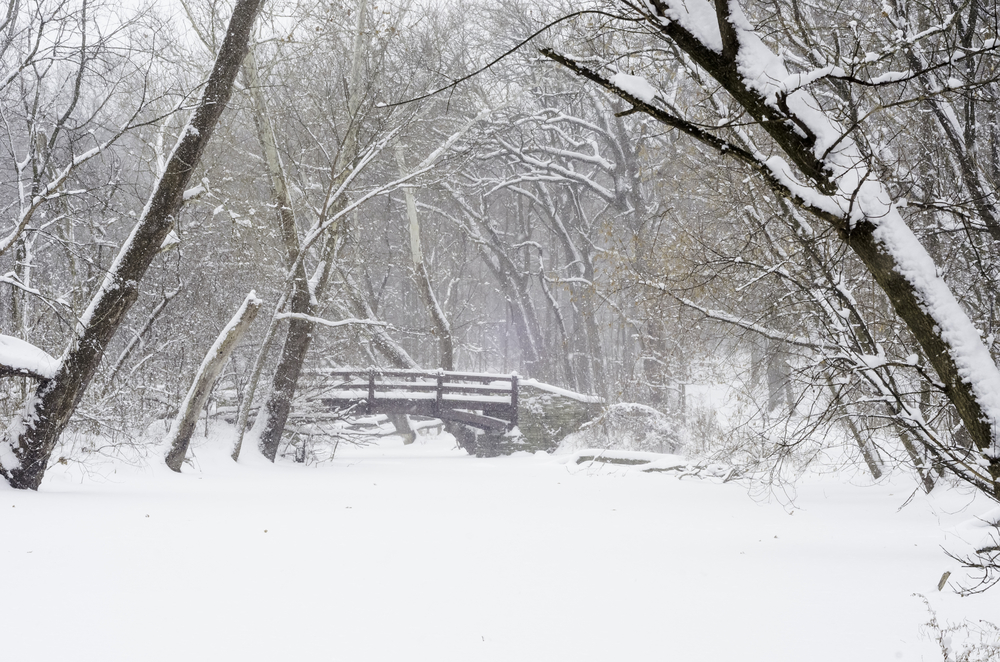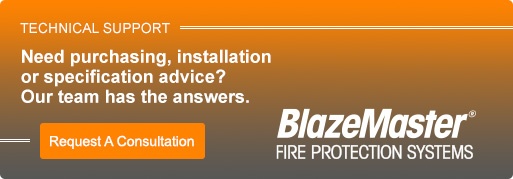5 Tips for Working with BlazeMaster® CPVC in Cold Weather
When the temperature drops, you likely take extra care in many of your daily activities – the way you drive, the maintenance of your home, and how you dress to go outdoors.
Installing a fire sprinkler system in cold temperatures can present challenges, but BlazeMaster® CPVC is safe to install at temperatures as low as 0 degrees Fahrenheit (-18 degrees Celsius). This post offers a few helpful tips, and with a bit of preparation and extra care, installing BlazeMaster Fire Protection Systems in cold weather should not be a problem.
1. Refer to Manufacturer's Installation Manuals and Consult with Designers
BlazeMaster CPVC manufacturing partners provide specific information about working with BlazeMaster CPVC in their installation manuals. Always refer to these manuals as your first reference point prior to any installation, cold weather or otherwise.
It’s also important to work with the system designer for a cold weather install. Taking account expansion and contraction for installation and eventual service life is a must for any project.
Cold weather installation means that the CPVC pipe may have contracted on the job site and will eventually expand when the project is completed as the building is heated. The change in temperature (ΔT) must be accounted for in order to reduce the stress on the pipe that expansion will eventually create. This can be prevented by introducing a change of direction, offset or expansion loop. There may be a natural offset or change in direction that accomplishes this, or you can install a fixed expansion loop to address expansion and contraction.
2. Store and Handle with Care
You should always handle BlazeMaster CPVC carefully, but cold temperatures may make CPVC pipe and fittings more brittle, so a bit of extra care must be taken. Store the pipe in a covered, warm area, if at all possible. Keeping all CPVC material stored in the same place is always a good idea, as it will ensure that the pipe and fittings are the same temperature before solvent welding.
If the pipe and fittings have been exposed to the elements, be sure to remove ice, snow and moisture before cutting and installing.
Don’t drag the pipe or allow it to drop, if possible.
Give the products an extra look before making the installation. Inspect the pipe and fittings for cracks or gouges, and if something doesn’t look or feel right, replace the material.
For specific storage and handling guidance, consult the installation guides of our manufacturing partners.
3. Choose the Right Cutting Tools
It’s best not to use a ratchet cutter in cold weather applications as these tools put pressure on the pipe, adding the potential for cracking.
We recommend using a fine-toothed saw or wheel cutter – specifically one with wheels designed for use with plastic pipe. Using these specific wheels when working with BlazeMaster CPVC, is best not just in cold weather but in any time of year.
4. Keep Solvent Cement Warm
Always use solvent cement that has been properly stored per manufacturer’s instructions – never store solvent cement outside of its recommended temperature range. To prevent the solvent cement from gelling or thickening in cold temperatures, contractors have been known to store the solvent cement cans in insulated “lunch containers” or foam coolers. I’ve also seen contractors drop disposable hand warmers into the insulated storage units, or wrap the solvent cement containers with beverage can jackets (aka, “koozies”) to keep the solvent cement warm.
5. Allow for Longer Cure Times
It’s a fact – cold weather installs mean significantly longer cure times. Cure times, of course, are a function of pipe size and temperature – and moisture, if present.
Always refer to the manufacturer’s manual regarding cure times before pressurizing the system.
If you have questions about cold weather information, our technical team is always here to help!


